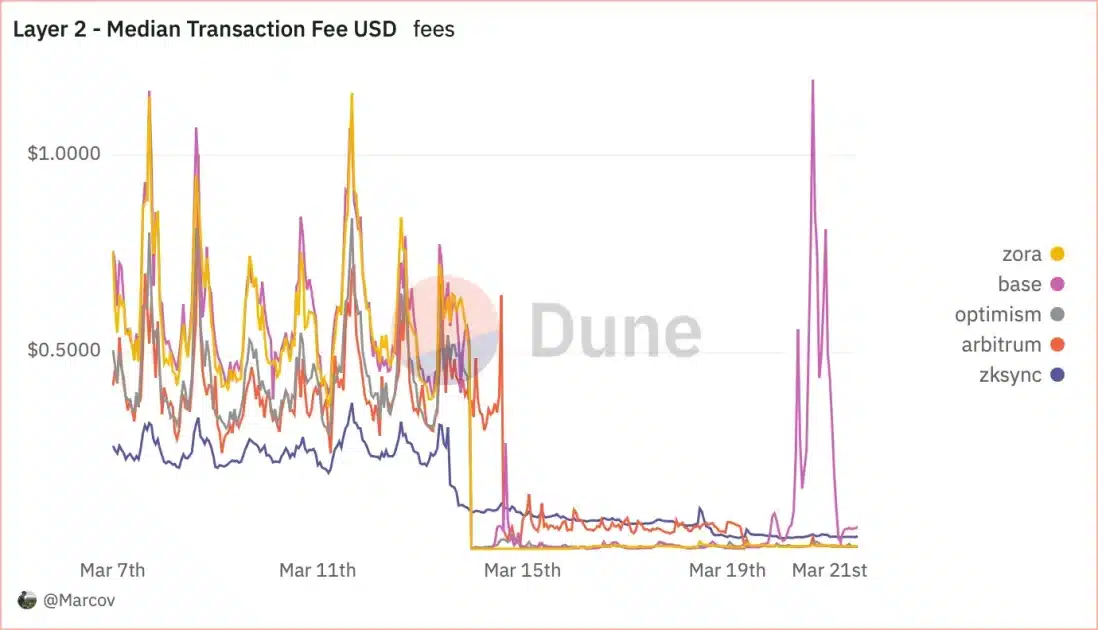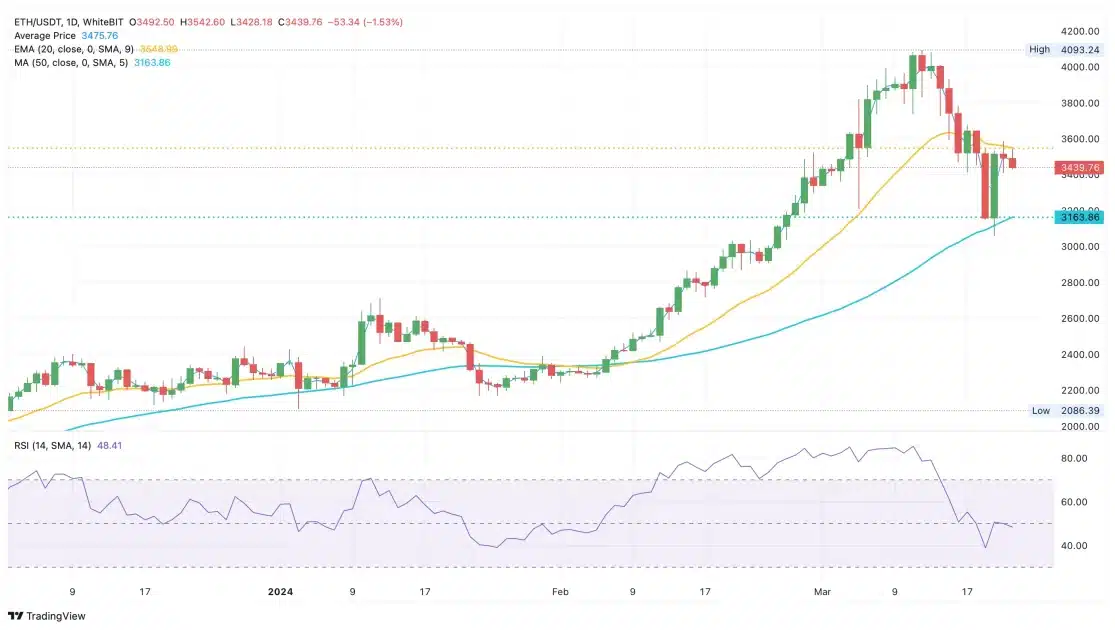A promising Dencun upgrade rolled out a week ago. But has it met the hype ever since?
Dencun, an amalgamation of two separate upgrades — Deneb and Cancun — went live on March 13, tackling both Ethereum’s consensus and execution layers in a single rollup.
Being the most anticipated hard fork since the Merge, the update was expected to reduce the transaction fees of layer 2 networks and enhance Ethereum’s overall scalability.
Now that the week has passed since the Dencun release, it’s time to strike the balance and sum up its effect so far.
What You Need to Know About Dencun
As was previously mentioned, Dencun combines in itself two separate updates – each providing a unique type of utility.
The objective of the Dencun upgrade is to augment the consensus layer that deals with how network participants agree on the state of the blockchain. Cancun, on the other hand, improves transaction management and processing on the execution layer.
The awaited transaction cost reduction is ensured with proto-danksharding – a novel technique that removes the limitations of the present on-chain data storage system, opening up a more effective data management system.
Simply put, proto-danksharding allows for layer 2 solutions to store bulky transaction data off-chain, lowering the fees for users.
Fees Lowering Close to Zero
The on-chain data proves that the Dencun came into effect almost immediately. According to blockchain analyst Marcov’s Dune-based tracker, the average cost of transactions on the core scaling solutions has seen a significant drop with the Dencun launch.

Median transaction fee in layer 2 networks. Source: Dune
Thus, the fee on the Optimism scaling solution has dropped to nearly 4 cents – down from the recent average of ca. $1.4. The average transaction cost on Base went from $1.5 to 3 cents, while Arbitrum’s declined to $0.4, moving to $0.01 after implementing a fee reduction mechanism.
The Dencun effect was interrupted only in Base. The transaction fees in Coinbase’s layer 2 chain had an abrupt upsurge on March 21, ending in the price range of $0.5 – $5.
Additionally, a transaction on Polygon still costs close to $0.70. While this is a significant decrease from the $1.85 in March, Polygon turned out to be the only layer 2 solution whose fees did not drop below $0.10 – all due to the partial implementation of Dencun in the network.
Meanwhile, ZkSync and Zora roll-ups turned out to be the greatest benefits. Following the Dencun launch, the cost for an NFT transfer within Zora diminished to $0.01. At the same time, ZKSync transactions are commissioned with only $0.05.
This proves the activity of the proto-danksharding, as the transactional bulk is not moving from the Ethereum mainnet to its layer 2 counterparts. By contrast, the daily transaction count and volume on Ethereum have indicated a significant rise alongside the Dencun upgrade.
New Step for Developers and Users
Apart from the fee reduction, the significance of the Dencun rollout lies in the development facility. Thus, Dencun streamlines transaction handling and consensus mechanisms for developers, which translates to a smoother development experience, making it easier and faster to build and deploy dApps on Ethereum. Enhanced developer experience further unlocks a wave of innovative projects, enriching the Ethereum ecosystem.
Apart from the visible advantages, Dencun sets stage for the further developments, i.e. Danksharding – an ultimate technique to advance Ethereum’s scalability.
The sharding “decentralizes” Ethereum from the development point of view, splitting the blockchain into smaller partitions that are available to host parallel transactions processing with a throughput increase.
A big step towards broadening Web3 adoption, which Dencun brought, was reflected in the realm by and large. The daily number of transactions in Whitechain, for instance, increased a few days after the Dencun upgrade. Its centerpiece – WBT – has been recovering throughout a week when the update was heating up.
Entering the Correction Market
The Dencun was brought into action rally-end. While the last week proved to be a frenzy for Bitcoin investors, the milestonical roller-coaster ended with a deep correction for the market.
Ethereum’s upgrade managed to fulfill its intended goal by lowering fees on L2 networks, but its native token – Ether (ETH) – surprisingly weakened at the end of the week, moving from the $4,000 to the $3,400 range in one fell swoop.

ETH/USDT 1D chart. Source: WhiteBIT Trading View
In the background, Dencun was a silver lining for a fair share of investors, who evaluated the buzz around it as a driving force for Ether’s price.
While the visible impact of Dencun remains the tip of the iceberg, its visible advancement of DeFi and transformation of the user experience poses an intrigue: what other gems Web3 adepts are coining to bring its adoption closer?
Free Tool: Use our simple crypto profit calculator to calculate your potential profits and returns on your cryptocurrency investments.<<<


